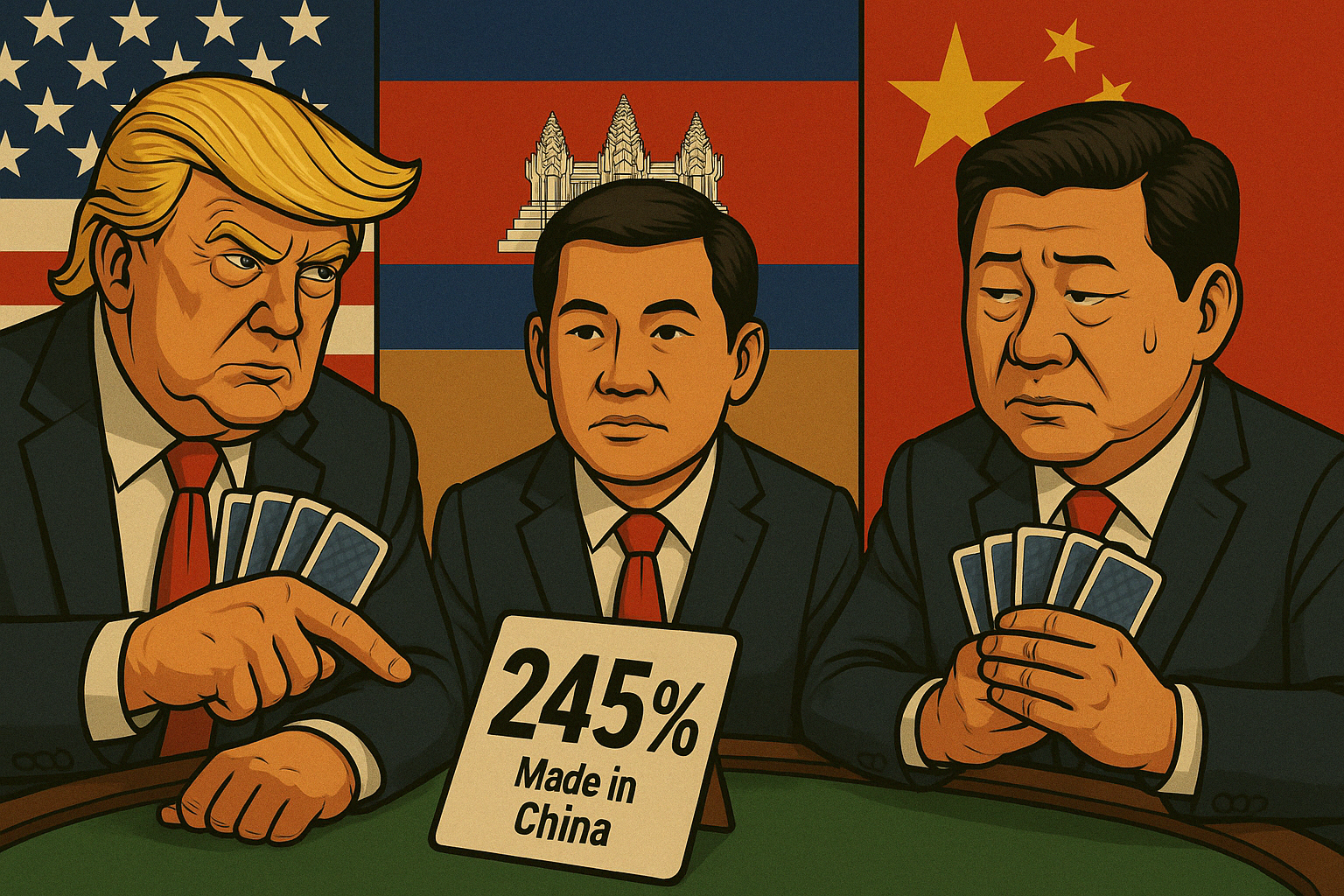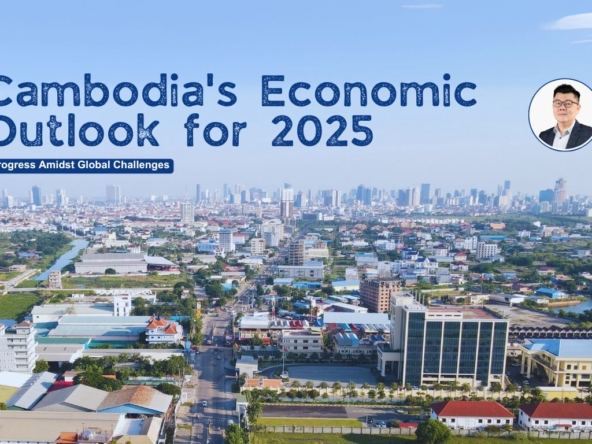The global trade landscape has become increasingly turbulent, marked by escalating tariff wars that ripple across economies. Recent developments, including the intensification of US-China trade tensions where maximum potential tariffs on some Chinese goods entering the US have reportedly reached up to 245% due to the stacking of various levies (including reciprocal tariffs, fentanyl-related tariffs, and older Section 301 duties), and a significant, targeted US tariff on Cambodian products, raise critical questions for investors. Specifically, could these tariff challenges diminish Cambodia’s appeal as an investment destination? While the headwinds are undeniable, a closer look reveals a complex picture with both risks and enduring potential.
The Headwinds: Why Tariffs Pose a Challenge
The most immediate concern for Cambodia stems from the new US tariff regime implemented in early April 2025. Under this “reciprocal tariff” system, Cambodian goods entering the US market now face an additional levy of approximately 49%. This rate is notably the highest among Southeast Asian nations subjected to these new tariffs and poses a direct threat to Cambodia’s export-oriented economy.
- Impact on Key Sectors: The US is Cambodia’s largest export market, absorbing nearly $10 billion worth of goods in 2024. Garments, Footwear, and Travel Goods (GFT) constitute the lion’s share of these exports. A 49% tariff could severely impact the competitiveness of these products, potentially leading to reduced orders, factory closures, and job losses in a sector crucial for Cambodian employment. Trade groups and businesses have expressed grave concerns, with some manufacturers already exploring relocating production to other countries (though notably, not back to the US).
- Supply Chain Vulnerability: Cambodia’s manufacturing success, particularly in GFT, relies heavily on imported raw materials and intermediate goods, often sourced from China. Escalating US-China tariffs, even if not directly targeting Cambodia, can increase the cost of these essential inputs, squeezing profit margins for Cambodian producers. Furthermore, Cambodia runs a significant trade deficit with China, importing far more (largely raw materials and machinery) than it exports, highlighting this dependency.
- Regional Competition: Cambodia is not alone in seeking foreign investment. Neighbouring countries like Vietnam and Thailand, also subject to new US tariffs (though at lower rates of 46% and 36% respectively), alongside others like Indonesia, are competing for the same pool of diversifying investment capital. This intensifies the competition for Cambodia to attract and retain businesses looking to implement “China+1” strategies.
The Silver Linings: Cambodia’s Enduring Appeal
Despite these significant challenges, several factors argue for Cambodia’s continued, and potentially even enhanced, attractiveness in the long run.
- The “China+1” Momentum: Ironically, the very trade tensions causing disruption are also a key driver pushing companies to diversify their manufacturing bases away from China. Cambodia, with its strategic location in Southeast Asia, competitive labour costs, and established manufacturing ecosystem (especially in GFT), is well-positioned to capture a share of this relocating investment. FDI inflows reached a record high in 2024, indicating continued investor confidence even amidst global uncertainty.
- Pro-Business Environment & Incentives: The Cambodian government actively courts foreign investment through mechanisms like the Qualified Investment Project (QIP) status, which can offer significant tax holidays (up to 15 years). The growing network of Special Economic Zones (SEZs) – with four new ones added in 2024 bringing the total to 30 – provides dedicated infrastructure and streamlined processes. Strong government-private sector dialogue aims to address investor concerns proactively.
- Expanding Market Access: Cambodia benefits significantly from its membership in ASEAN and the Regional Comprehensive Economic Partnership (RCEP), the world’s largest free trade bloc. RCEP simplifies rules of origin, enhances trade facilitation, and provides preferential access to a vast regional market. Bilateral Free Trade Agreements (FTAs) with China (CCFTA) and South Korea (CKFTA), along with a Comprehensive Economic Partnership Agreement (CEPA) with the UAE, further broaden duty-free access for goods produced in Cambodia.
- Infrastructure and Diversification Efforts: Recognizing the need to move beyond GFT, Cambodia is investing heavily in infrastructure (logistics, transport, energy) and promoting diversification into areas like agro-processing, electronics, automotive parts, and tourism. RCEP, in particular, is seen as a catalyst for attracting investment into higher value-added industries and integrating Cambodian SMEs into regional value chains.
There is no denying that the imposition of a 49% US tariff presents a serious, immediate challenge to Cambodia’s economy, particularly its vital GFT sector. Businesses and the government face a critical period of adaptation and negotiation.
However, viewing this solely through the lens of immediate tariff impact overlooks the broader strategic shifts and Cambodia’s underlying strengths. The global push for supply chain diversification plays to Cambodia’s advantage as an alternative manufacturing hub within ASEAN. Its young, dynamic workforce, improving infrastructure, proactive investment policies, and deep integration into regional trade frameworks like RCEP provide a solid foundation for future growth.
The current tariff situation underscores the urgency for Cambodia to accelerate its economic diversification efforts, reduce reliance on imported inputs where possible, and continuously improve its investment climate. While the path ahead involves navigating significant turbulence, Cambodia retains substantial potential as a strategic location for resilient and strategic long-term investment, offering access within the dynamic heart of Southeast Asia. For investors with a long-term horizon focused on regional integration and supply chain diversification, Cambodia remains a compelling prospect, albeit one requiring careful navigation of the current trade headwinds.



